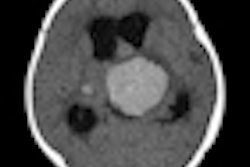The impact of screening virtual colonoscopy (also known as CT colonography or CTC) in an area where the procedure is fully reimbursable appears not to have affected endoscopic procedures but, instead, has led to an increase in the number of optical colonoscopies performed, researchers found.
"In the past five years, we have seen a doubling of the number of people who have come in for colonoscopies," said Dr. Patrick Pfau, associate professor and director of clinical gastroenterology at the University of Wisconsin School of Medicine and Public Health in Madison, at Digestive Disease Week (DDW) 2010 held earlier this month in New Orleans.
"Virtual colonoscopy has been around for about 10 years, and there is a general feeling and a fear that it would result in decreased endoscopic screening numbers," Pfau said in a press briefing at the meeting. "There were some modeling studies that suggested there would be a 10% to 25% drop in endoscopic colonoscopy if CT colonoscopy became widely available."
Pfau and colleagues reviewed their data in a region where the playing field is level as far as insurance reimbursement is concerned. "In our city we are somewhat unique in that since 2004 all the third-party payors in the area around Madison have paid for virtual colonoscopy," he explained. "So our primary care doctors have full access to both endoscopic screening and virtual colonoscopy screening."
He reported previously that in the first two years after virtual colonoscopy was green-lighted by local insurers, the treatment started to take off. In his update presented at this year's DDW meeting, Pfau said that by 2006 the number of VC exams had peaked at slightly more than 100 procedures a month and then has slowly declined to about 70 a month.
"Since the institution of that same screening program, virtual colonoscopy has had no effect on our endoscopic colonoscopy numbers," he said. "The total endoscopic colonoscopy screening numbers have doubled since the virtual colonoscopy program started."
"We also looked at how many therapeutic colonoscopies we have done since the virtual colonoscopy program started," he said. "Some thought that the virtual colonoscopy program might decrease the overall numbers of endoscopic colonoscopies but would increase the number of cases of therapeutic colonoscopies. But the number of therapeutic or polypectomy colonoscopies also doubled -- it really just paralleled how much our endoscopic screening went up."
In 2009, he said, about 85% of individuals underwent endoscopic colonoscopy screening and about 8.5% were screened using virtual colonoscopy, meaning that the total number of cases screened using some combination of endoscopic or virtual colonoscopy has more than doubled over the course of the program. Other people are screened using fecal occult blood tests.
Nevertheless, despite the increase in numbers of individuals screened for colon cancer, Pfau said there are still many more people who have not been checked for colon cancer with some form of screening.
"We have screened about 70% of our healthcare system, so we have plenty more to do," he said. "We did have a long waiting list for screening colonoscopy, and at one point it was a one-year wait from the time the private practice physician ordered it. The reason our numbers have gone up is because there are lots and lots of colons out there. The providers have been referring them more frequently."
"We are now asking our primary care doctors why they choose one modality over another," Pfau said. "We thought that once doctors got used to the idea of virtual colonoscopy, it would begin to affect the number of endoscopic colonoscopies, but it has not."
"I think it is still a novel therapy, and I think that referrers order what they have always ordered. It is a good test, and some people might say it is the best test. CT colonoscopy has not replaced endoscopic colonoscopy," he said. "It may have added about 10% to the number of people who have gotten colonoscopies. We are not completely sure why the numbers for colonoscopy have not gone up more, and they still may."
The debate on which modality is best for screening continues, but Dr. John Inadomi, professor of medicine at the University of South Florida in Tampa, said, "The best test for colonoscopy screening is the test that gets done."
By Edward Susman
AuntMinnie.com contributing writer
May 17, 2010
Related Reading
5-year C-RADS analysis shows stable VC screening results, May 6, 2010
VC helps screen U.S. minorities, May 4, 2010
Hispanics have less access to colon screening, April 12, 2010
Massive VC study yields trove of extracolonic cancers, March 23, 2010
VC screening maintains performance in Medicare population, November 9, 2009
Copyright © 2010 AuntMinnie.com




















